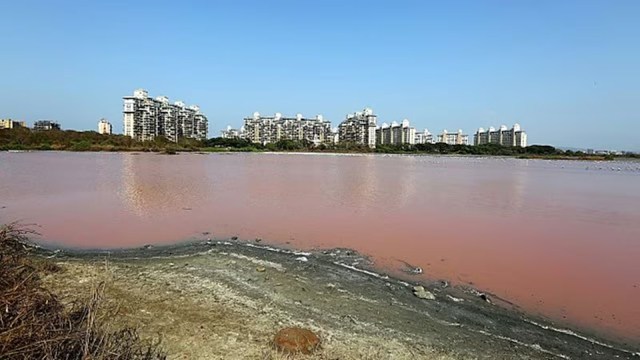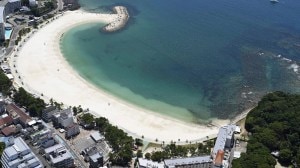Mumbai lake levels seven times higher than last year
Officials from the BMC have attributed the significant departure in lake levels this year to the early onset of monsoon, which spurred several heavy spells in June.
 Mumbai draws its daily potable water from seven lakes--Upper Vaitarna, Modak Sagar, Tansa, Middle Vaitarna, Bhatsa, Vehar and Tulsi--which have a cumulative capacity of 14.47 lakh million litres. (Source: File)
Mumbai draws its daily potable water from seven lakes--Upper Vaitarna, Modak Sagar, Tansa, Middle Vaitarna, Bhatsa, Vehar and Tulsi--which have a cumulative capacity of 14.47 lakh million litres. (Source: File)On Friday, the water stock in the seven lakes soared to 37 per cent of the total capacity–marking a seven-fold high from the previous year when the lake stock had remained at 5.29 per cent on the same day in June.
The data furnished by the BMC showed that on Friday, the total stock in the seven lakes which cater to Mumbai’s water supply touched 5.37 lakh million litres, which makes up for 37.16 per cent of the total capacity of the lake.
According to the civic data, the lake levels this year are at least 600 per cent higher than the previous year when the lake levels had dwindled to 5.29 per cent on the same day. In 2023 as well, the total stock in the seven lakes had plummeted to 6.97 per cent (1.08 lakh million litres) on the same day in what left the city reeling under a water cut.
Speaking to The Indian Express, sources in the Brihanmumbai Municipal Corporation (BMC) indicated that this is likely the highest that Mumbai’s lake levels have touched in the past two decades in June. Records from the civic body show that in the past one decade at least, the highest lake levels on June 27 had been recorded in 2017 when the total stock of water in the lakes had touched 3.51 lakh million litres–accounting for 24 percent of the total stock–which was also much lower than this year’s lake levels in June.
Mumbai draws its daily potable water from seven lakes–Upper Vaitarna, Modak Sagar, Tansa, Middle Vaitarna, Bhatsa, Vehar and Tulsi–which have a cumulative capacity of 14.47 lakh million litres. It is during the monsoon months spanning June to September that these lakes get replenished with water from these sources. The water is then supplied across the city throughout the year via a labyrinthine network of channels.
Officials from the BMC have attributed the significant departure in lake levels this year to the early onset of monsoon, which spurred several heavy spells in June. For the record, this year, Mumbai had witnessed its earliest monsoon onset in the past 75 years at least when extremely heavy rainfall battered pockets of the region on May 26.
“Usually, heavy rain in Mumbai starts towards the end of June, after which the lakes start replenishing. However, this year, we started receiving monsoon spells as early as May. Following this, the region also received several wet spells in June which resulted in the lake levels rising higher,” said an official from BMC.
So far, over 722 mm rainfall has been recorded over the seven lakes–which is significantly higher than last year when only 347 mm rain had been recorded during the same period. Of the seven sources, the heaviest downpour has been registered over Middle Vaitarna lake which has received 868 mm rain until June 27–remaining much higher than last year, when the lake had received only 260 mm rain during the same period. Meanwhile, among the total seven lakes, Upper Vaitarna dam has nearly 44 percent of live storage followed by 42 percent in Vehar lake and 40 percent at Tulsi and Tansa lake each.
Amid the lake levels replenishing at a fast rate, the civic body on June 19 revoked its decision to draw water from the state reserve stock, for which the BMC had written to the state government in March, requesting an allocation of nearly 1.81 lakh million litres of reserve water stock for two of its dams – Bhatsa and Upper Vaitarna. “We had started drawing water from the state reserve stock on June 16. However, after receiving heavy spells during that period, the lake levels saw a good rise. Therefore, we revoked our decision to draw water from the reserves within four days on June 19,” a senior official told Express.
Earlier on June 18, Mumbai’s Powai lake, an artificial water body that supplies non-potable water to the city, started overflowing after its level reached its maximum capacity following heavy rain.












